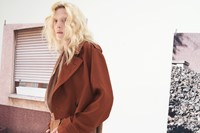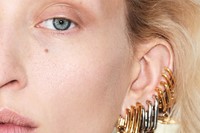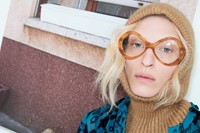“Being French is about always being a contradiction,” Natacha Ramsay-Levi says. As if to prove the fact, she’s sitting in her office in the headquarters of Chloé, the French fashion house whose creative directorship she assumed in 2017. It’s a lefty, creative environment in the middle of the 8th arrondissement, peak Parisian aristocratic snobisme. It’s quiet now, yet, being adjacent to the Champs-Élysées, for many weekends it has been at the epicentre of raging discord, while the gilets jaunes have been voicing their discontent, épater-ing les bourgeois.
“We never agree. We protest a lot,” says Ramsay-Levi. She’s not talking about the yellow vests in particular but about French politics, French culture, the French in general – which she didn’t realise was a discussion point before she took the helm of Chloé, as the first Frenchwoman in the post since Martine Sitbon, who left in 1992. Ramsay-Levi comes after 20 years of nearly all British female creative directors (the odd man out – literally – is Swede Paulo Melim Andersson, who lasted three seasons). “Stella, Phoebe, Hannah, Clare,” rattles off Ramsay-Levi. Surnames are not necessary. “They gave another texture,” she says. And her work reflects both them, and that – a horse-print borrowed from Stella McCartney’s era, broderie anglaise culled from Phoebe Philo’s tenure and, further back, Karl Lagerfeld’s winning way with prints (and the rest). Across half a dozen shows, Ramsay-Levi has, cleverly, reset our perception of the house by using elements from its own past.
But back to the French. “There’s this idea of layers – we’re never one full thing,” says Ramsay-Levi. “The French woman is natural? She spends hours in front of the mirror! Like everybody. It’s very calculated but it looks natural. Voilà. Maybe my idea of doing fashion reflects that. For me, it’s very difficult to do something that is first degree, very literal.”
Chloé could be very literal – for many, and despite its Brit-heavy latter-day leadership, it’s the quintessence of French-ness in fashion. Especially as Ramsay-Levi is, herself, typically French – but, to follow her own reasoning, that French-ness comes knotted up with a whole bunch of contradictions. She was born in Paris, hence a great, thick, ripe accent, but with neither airs nor graces. Straight from fashion school, she began to work with the designer Nicolas Ghesquière, becoming his right-hand woman first at Balenciaga, then Louis Vuitton. Her role at Chloé is her first solo gig. And as that pedigree suggests, she loves fashion – unequivocally, unapologetically. There are plenty of pictures of Ramsay-Levi looking arch and poised and hopelessly, unachievably cool, in that way only Parisian women (with make-up or not) seem able to pull off. But in the flesh, Ramsay-Levi isn’t cool – she’s warm. She’s welcoming, convivial, plain nice – a word, unlike cool, that is woefully underused, especially in fashion. In short, she confounds expectations.
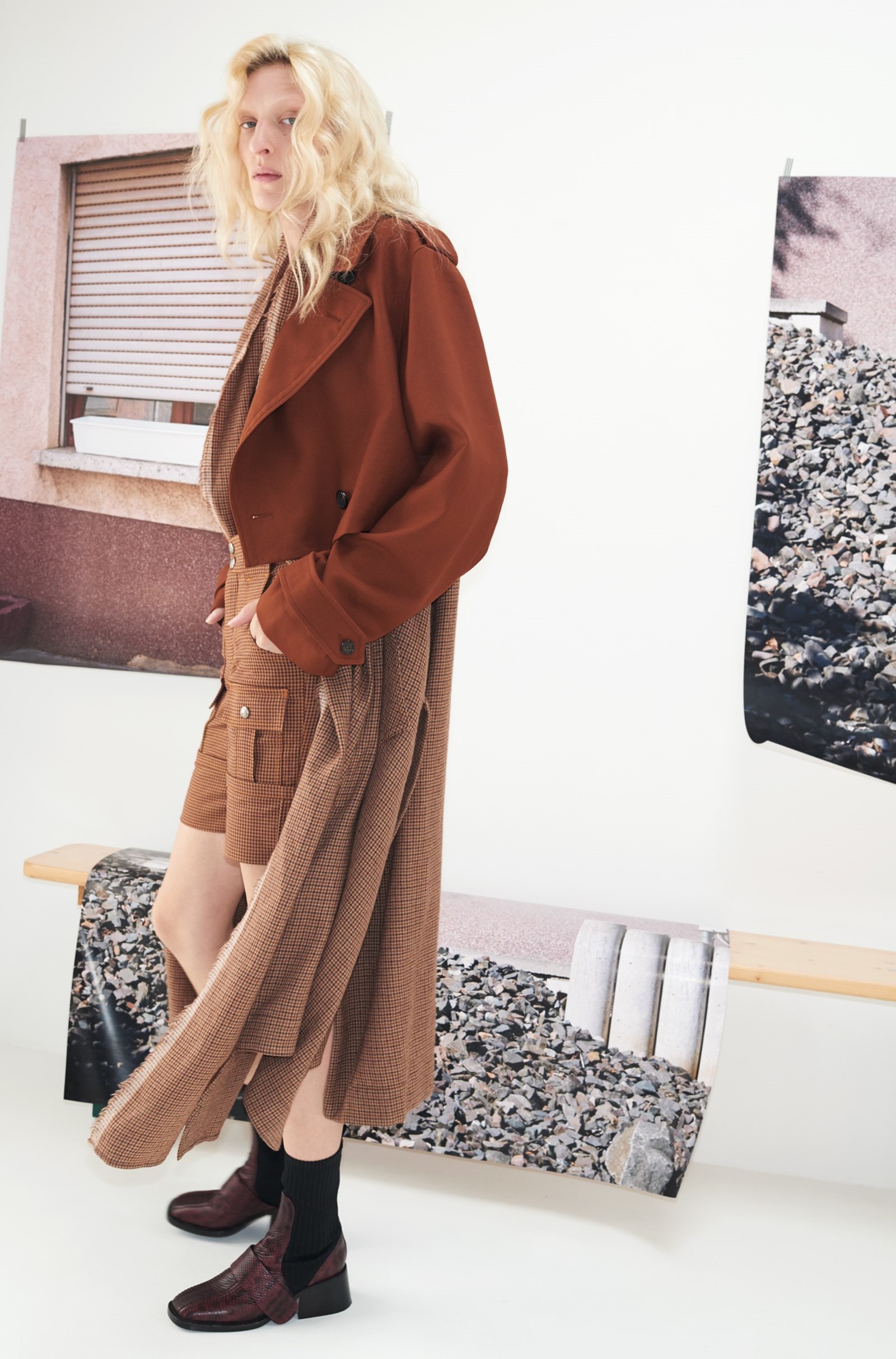
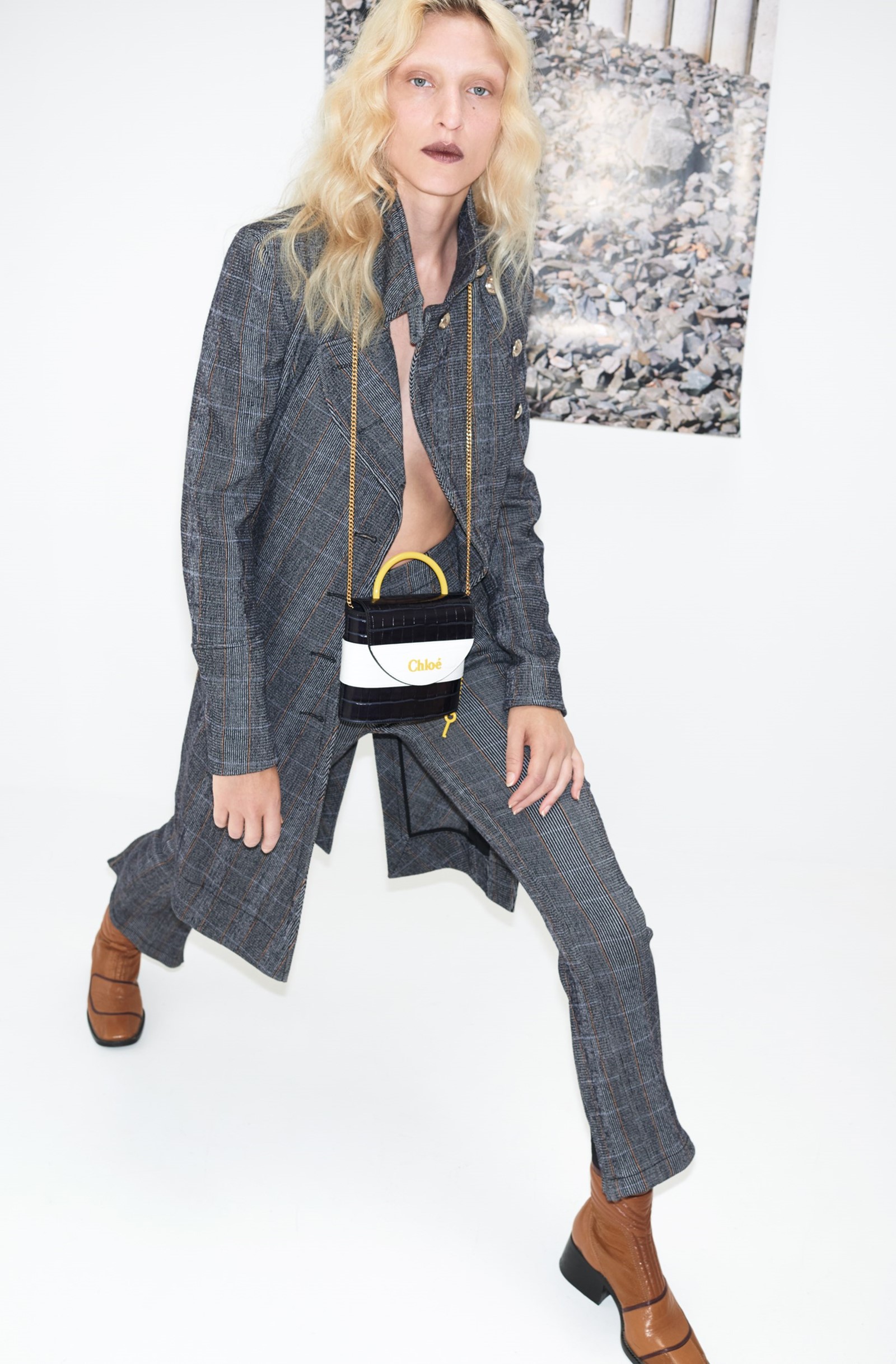
A word that is often used about Ramsay-Levi’s Chloé woman, however, is ‘tough’. And perhaps, in the history of Chloé, she is. Ramsay-Levi certainly fights against the notion of Chloé being about wafting chiffon and Vaseline-smeared lenses. She tailors wool gabardine with a dynamic bounce, slices chiffon with graphic precision – she challenges what materials want to do, and makes them go her way. Talking to her, you get it; she smiles, but she’s focused and determined, precise and considered. She also disagrees. “I wouldn’t say that my Chloé women are tough,” she counters, toughly. “They’re strong, they’re confident. I think women have always needed to be tough. But it’s one part of the personality.”
When we meet, Ramsay-Levi is wearing a white jacquard blouse up top – very Chloé – and below, black leather biker trousers. Not so Chloé. Then again, what really constitutes Chloé? The brand was established in 1952 by Gaby Aghion, an Egyptian woman who disliked the clothes on offer from haute couture houses and, provocatively, decided to make her own. (Ramsay-Levi didn’t meet Aghion before she died in 2014, but she’s a character who fascinates her: “The spirit of the family is very present.”) Chloé was obviously not named after Aghion but a friend, Chloé Huysmans. Its founder also liked the way the name looked when written out – which sounds like modern marketing, but was anything but. But Chloé did kind of invent modern fashion, pioneering the idea of prêt-a-porter – some sources even credit Aghion with coining the pithy term. If so, that would make her a marketing genius to rival Lagerfeld, the maverick fashion maestro who first took a role there in 1964 and used it to catapult both himself to worldwide fame, and the nascent category of ready-to-wear to creative supremacy in Parisian fashion.
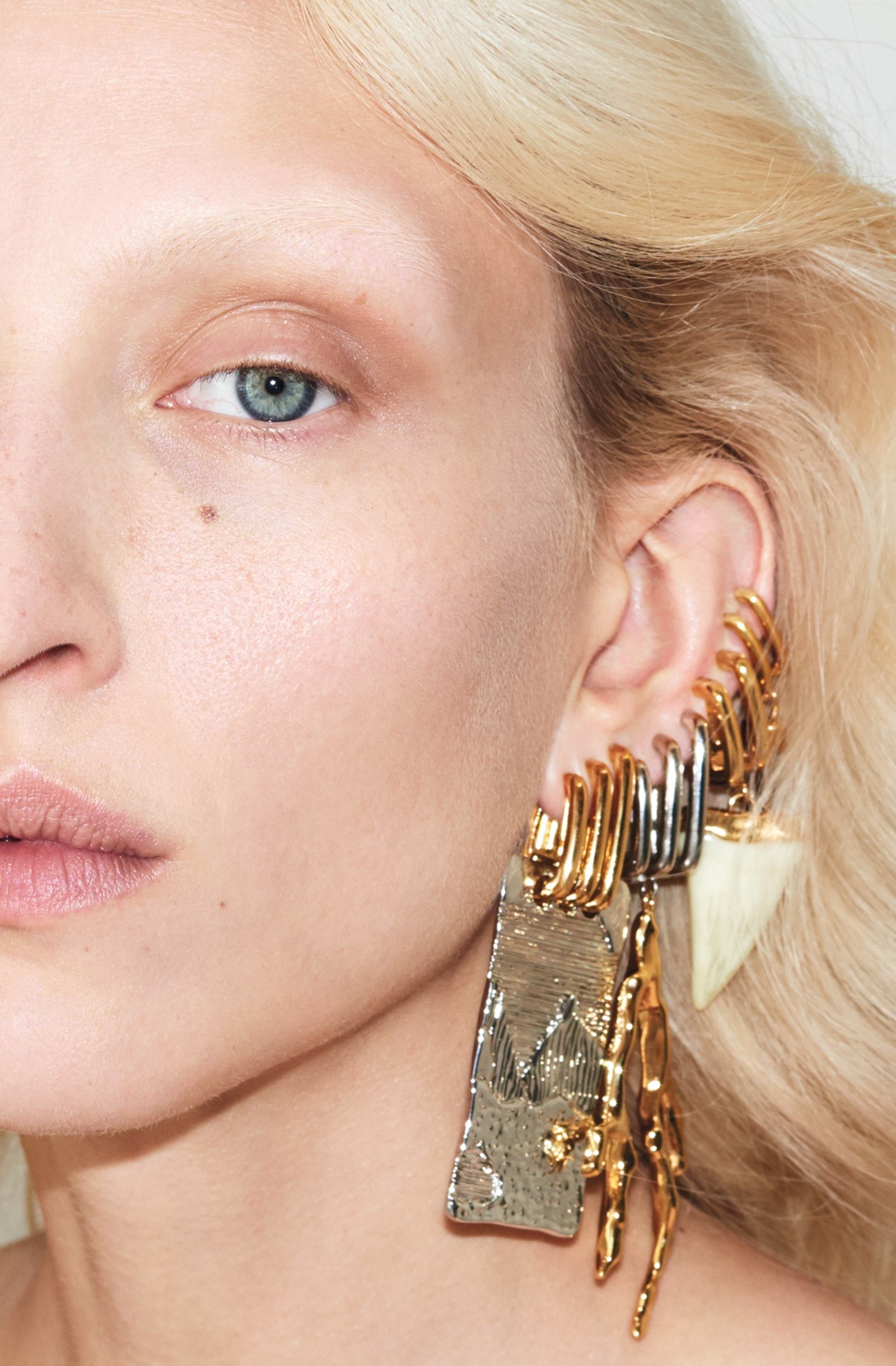
In essence, the fact that Chloé is both no woman and everywoman has given the label’s designers free rein to imagine the hypothetical, ephemeral ‘Chloé’ as whatever they want her to be – whosoever best suits the message they’re trying to get across. “Chloé is not here to invent,” reasons Ramsay-Levi. “The trick with Chloé is that we take something that has existed – a mood, an attitude, a type of clothing – and make it relevant to the present.”
Fashion wasn’t part of Ramsay-Levi’s upbringing. Her parents, she says, had style, but weren’t fashionable per se. Her mother “who was – is – a very beautiful woman, and dresses very well”, didn’t wear Chloé – Ramsay-Levi was born in 1980, just missing the label’s Seventies glory days. She first became aware of Chloé, unconventionally, through cinema – Lagerfeld designed costumes for French actor Stéphane Audran, including for Luis Buñuel’s Le Charme discret de la bourgeoisie (1972). After abandoning the fourth and final year of a history degree, Ramsay-Levi enrolled at Studio Berçot to study fashion. She had already, somewhat idiosyncratically, created a collection with a friend. “I knew how to sew, my grandmother was a seamstress, and I liked to do my own thing,” she says, matter-of-factly. It was for their circle of friends, rather than a swing at entering the industry. When she began studying fashion, she couldn’t draw. What attracted her to fashion, however, was “the idea of communities. You were buying clothes, and you felt like you were part of this community. And it meant something,” she says now. “I remember getting a Hussein Chalayan T-Shirt – and it was political. His message about immigration… Coming from a history background, I needed the idea of community, a gesture of the political. It’s a point of view.” And when she began working with Ghesquière after graduation (her ardent admiration for the then-upstart Frenchman’s style earned her epithet “the Balenciaga fan” at design school), she found her tribe within the aesthetic of a designer already being described as cult.
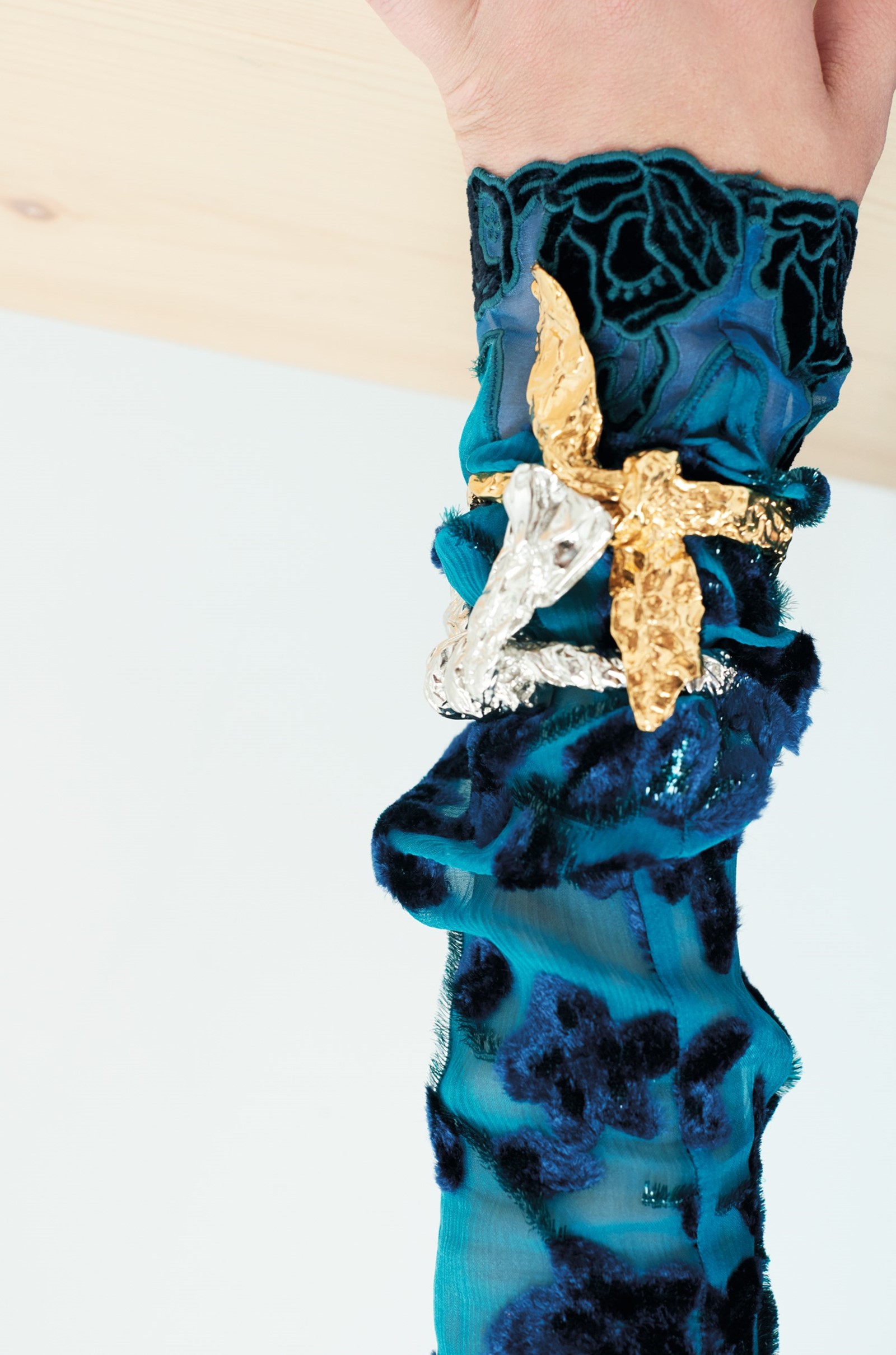
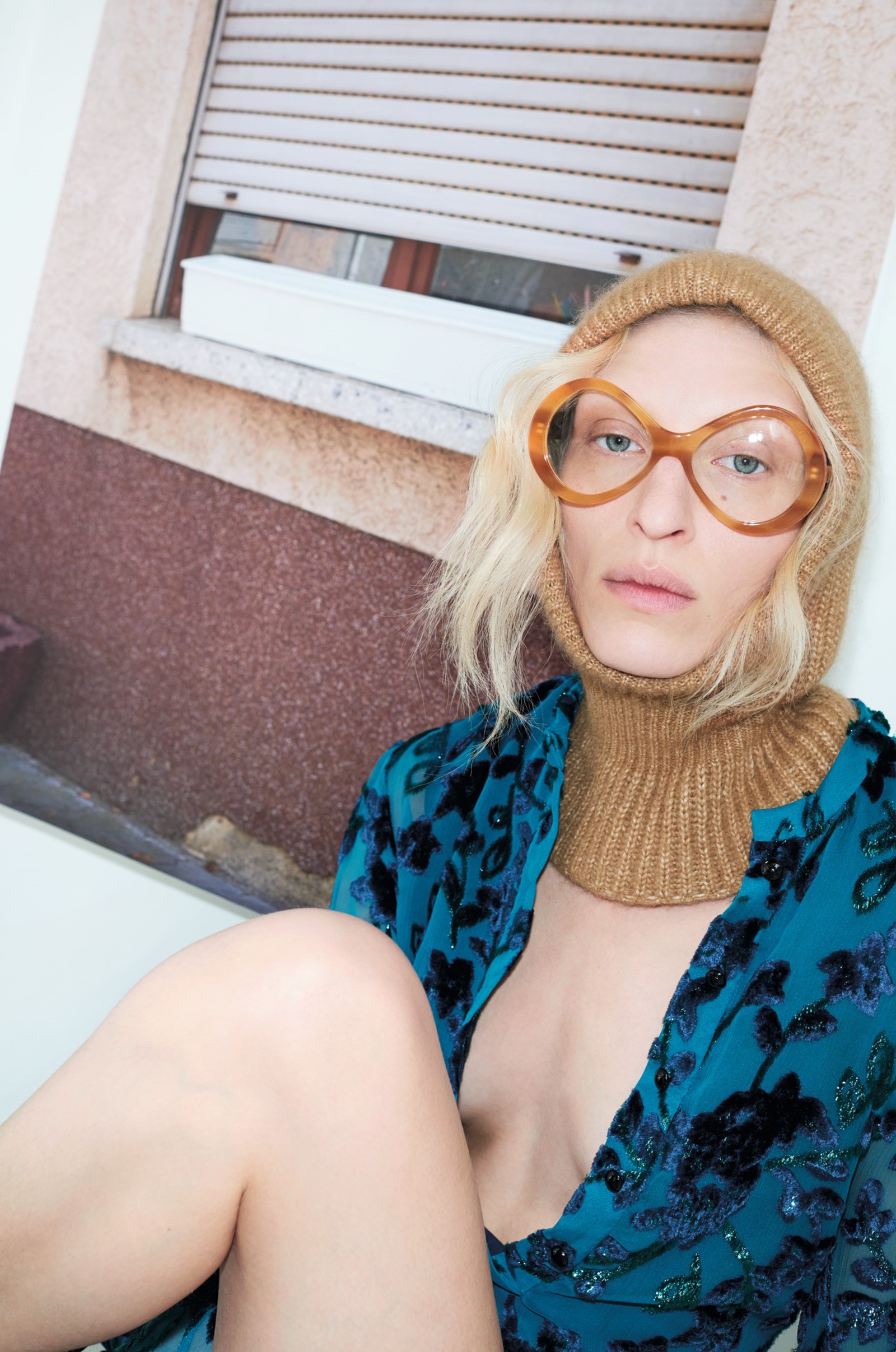
Ramsay-Levi’s approach to Chloé betrays that multifaceted background. She tackles it a little like a history project, excavating the archives – almost 70 years’ worth, of which very little is widely known – to find hidden treasures. “I did history before. I can’t do things that are nonsense,” she says. “I like to take something from the past and work it for now, with that vision.” A pause. “And I love the house,” she adds, emphatically. You can see that love – and her love of fashion – in the pieces she designs. Her homage to the galloping-stallion graphic designed by McCartney also reminds you of her relative youth: Ramsay-Levi was just 20 when it appeared on the catwalk in October 2000. She has described her work as “vintage of the future” – which has a ring to it. And when designing within a house like Chloé, history is implicit: it’s a bigger entity than any single designer, one that has already warranted museum shows and hefty tomes. When you step into a heritage house, you’re automatically part of history. In the future, people will look back at what you do. “I love that idea, I have to say,” Ramsay-Levi says.
Rifling through the references in her Chloé, you realise how dichotomous and many the house’s identities have been. Which makes it all the more pointed that Ramsay-Levi has tossed them together, shaken them up and pulled out something that feels fresh and new while also paradoxically familiar. “The attitude always has to feel right,” is how Ramsay-Levi says she edits it. “In a way, the frame is super-precise – we all know what Chloé is, but there are so many interpretations. It’s about femininity for sure. But... that’s big!”


Femininity is a big thing at Chloé – and, of course, Ramsay-Levi is a woman, designing for women. Which is significant. “I’m a woman designer, I speak from my perspective. Also, there is very much a link with sensuality, how clothes fall on your body, what it gives. We talk about wearability – not in terms of comfort, but what clothes can give,” she says. “Chloé, for me, is about talking about the reality of the woman. There’s a realness to it. To me – especially in our times – the realness is not about being airy, or by the beach. I know those women exist, but it’s not for me.”
So, maybe women do need to be tough today? Ramsay-Levi acquiesces somewhat. “As designers, we are sponges. For two years at Chloé I have involved myself a lot... The political moment is really bad, so we’re thinking about that. And to make fashion today is a struggle. I have to say, in these two years, what I have done is super-sincere.” She smiles. Sincere, like nice, is a word seldom used today. It has a pleasant, honest ring to it. “There’s a sincerity in our job – you are very sincere with what you do,” Ramsay-Levi says. “There are not a lot of designers who can do something they dislike.”
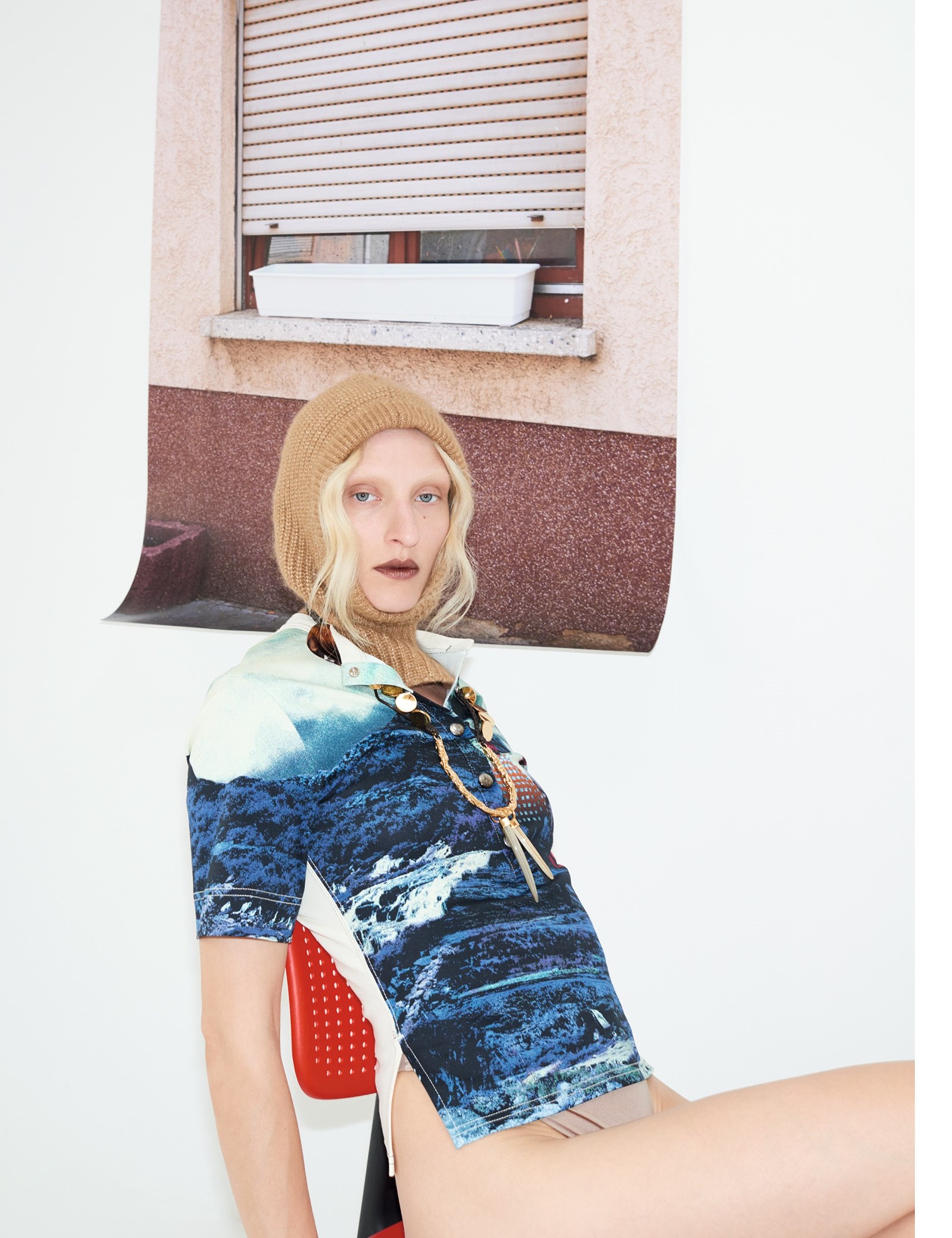
All clothing and accessories from the Chloé Autumn/Winter 2019 collection
Hair: Gregor Makris using Oribe. Make-up: Satoko Watanabe at Artlist using Giorgio Armani Beauty. Model: Maggie Maurer at IMG London. Casting: Noah Shelley at Streeters. Photographic assistant: Peter Keyser. Styling assistants: Molly Shillingford and Maria Bonfà. Production: The Collective Shift
This story originally featured in the Autumn/Winter 2019 issue of AnOther Magazine, which is on sale now.


